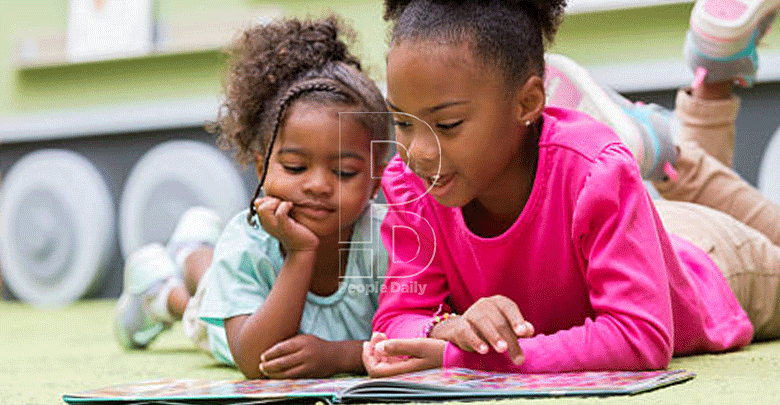Playing and reading as developmental aids for children
By Njeri Maina, August 17, 2021Covid-19 has changed the way we do things. While young children love playing, the pandemic has minimised opportunities of play as physical interactions are frowned upon.
Last year, at the height of coronavirus and its associated restrictions, Zain Nasser, is one of many mothers who were stuck in the house with energetic babies who could no longer go outside to play with other children as they used to do.
With schools closed, Zain had to look for ways to keep her children occupied.
“I am a mum of two young children; a three-year-old son named Adam and a one-year-old daughter named Nuri.
Last year, my firstborn was just two years when he was forced to readjust to life indoors.
As I was researching on activities I could do with him, I realised there was an information gap locally.
I started creating sensory play and Do-It-Yourself (DIY) activities for him and sharing them on my Instagram page.
People would direct message me and ask for information on how to create certain games and to engage with their young ones.
I decided to form a platform, Playroom Kenya, on Instagram, where parents could connect and empower each other with information,” she explains.
Play time
Zain strongly believes that play allows children to develop physical and cognitive skills and is also a great way to bond.
She favours wooden toys as they are more long lasting and can grow with the children.
Since they can be more expensive than plastic toys, she looks for deals on Preloved, an online second-hand toy shop online.
Where possible, she involves her preschooler in making DIY (Do-It-Yourself) toys and encourages activities, such as cooking, or play recipes, such as play dough.
Florence Mueni, a play therapist with the Association of Play Therapy Kenya shares that play is not an idle activity like many people think.
Active play is essential for children as it helps them grow fine and motor skills, as well as helps them expend surplus energy, which if pent up, can make the child irritable, nervous and tense.
“Play can also be educational. Through various forms of play, such as games, toys, fantasy, puzzles, and computer games, the child can learn about shapes, sizes and texture.
Play also fosters creativity as the child can try out his ideas in toy constructions and dramatisation.
It also reinforces rules the child may have learnt at home, especially when playing in a group. It teaches the child social skills, such as being part of a group and negotiating.
Games that engage all senses, such as making things with Lego blocks, playing with sand, mud, the smell of the outdoors, playing with musical instruments or things in the house that produce noise, and tasting and playing with food are all ways children explore and learn about their environment.
Children should be encouraged to play as the pros outweigh cons, such as messes and torn clothes,” Mueni continues.
See world through books
Other than play, reading to and with children is another activity that has a great impact on child development.
Zain shares how she started reading to both her children early. For a newborn, she would pick a high contrast black and white book, which is more arresting for the child as their vision develops.
For a six to 18 -month-old baby, she would buy a book with textures and flaps to engage their senses and invite them to participate.
With time, the complexities would increase to picture books with a bit more of a story like her three-year-old Adam is into now.
“My aim is to cultivate in them a love for reading. I use books as a cornerstone of our lives, such as preparing my children for transitions, such as starting school, or to introduce them to big holidays, such as Eid that would otherwise be stressful if suddenly sprung on them,” she shares.
Mueni says that books should be an integral part of children’s lives. Children do not need to comprehend the words being read to them as reading is one way of teaching them new words and bonding with them.
However, she cautions against long reading times, especially for toddlers. The younger the child, the shorter the time you should spend reading with them.
As they grow older, she advises parents to increase complexity of the books as this helps grow the child’s memory and imagination and helps engage the senses of sight and hearing.
She cautions against scary stories as children are imaginative and this could easily give them nightmares.
“Make reading fun, not an academic exercise. This will help grow a love for books in the child rather than an aversion for the same,” Mueni shares.
Zain’s advice to anyone who wants to start a reading culture is that it is never too late.
“Children might not sit through their first book, but if you are persistent, they will eventually come around.
Pick books that interest them and start with between five and 10 minutes daily.
Also, one of the best ways to encourage reading is placing the books within view and reach of the children so they can pick them up whenever they want,” Zain says in conclusion.
